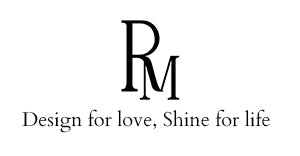Emerald Rings: The Perfect Symbol of Luxury, Elegance, and Meaning
1. Why Choose an Emerald Ring?
When it comes to choosing the perfect engagement or statement ring, emerald rings stand out as a symbol of luxury, elegance, and profound meaning. This captivating green gemstone has long been cherished for its stunning color and rich history. In this article, we'll explore what makes emerald rings special, the symbolism they hold, and how to choose the ideal one for your style and budget.

2. What Makes an Emerald Ring Special?
An emerald is a variety of the mineral beryl, known for its vivid green color. What makes emeralds so exceptional is not just their beautiful hue, but their historical significance and rarity. With their unique shade of green ranging from deep forest tones to lighter, fresher hues, emeralds captivate with a brilliance unlike any other gemstone.
Unlike diamonds, which are valued primarily for their clarity, emeralds are graded based on their color. The more intense and vibrant the green, the more valuable the emerald. While they may not have the same hardness as diamonds, emeralds are still durable enough for use in fine jewelry when treated with care.
3. The Symbolism of Emerald Rings
Emeralds have been symbolic of wealth, power, and healing for centuries. Historically, these gemstones were favored by ancient Egyptian queens and royalty, including Cleopatra, who was known for her love of emeralds. The green color of the emerald is often associated with nature, renewal, and growth.
In modern times, emerald rings are considered a symbol of love and loyalty. They also represent fertility, hope, and positive energy, making them a meaningful choice for engagements, anniversaries, or other significant life events. The vibrant green hue is a reminder of the beauty and balance found in nature, making an emerald ring not only a stunning piece of jewelry but also a deeply meaningful one.
4. How to Choose an Emerald Ring
Color: The most important factor when selecting an emerald is its color. The finest emeralds exhibit a rich, vibrant green with minimal yellow or blue undertones. The deeper and more vivid the color, the more valuable the stone. Aim for an emerald with a balanced hue and high saturation.
Clarity: Unlike diamonds, emeralds often contain natural inclusions, known as “garden,” which can affect their clarity. However, some inclusions are accepted as part of the gem's character. The fewer the inclusions, the higher the value, but perfect clarity is rare in emeralds.
Cut: The cut of an emerald refers to the way it has been shaped. While the emerald cut is the most common, other cuts like oval, round, and cushion can also be used. The cut should enhance the emerald's natural color and brilliance.
Carat Weight: Emeralds are priced based on carat weight, but due to their rarity, larger emeralds are exponentially more valuable. However, size isn't everything—color and clarity should also be prioritized when making your choice.
5. Popular Emerald Ring Styles
Emerald rings come in a variety of styles, making them versatile enough for any occasion. Here are a few popular styles:
- Solitaire Design: A single emerald set in a simple band, showcasing the stone's natural beauty.
- Halo Design: A halo of diamonds or smaller gemstones surrounding the emerald, making it appear larger and enhancing its sparkle.
- Three-Stone Design: Often used in engagement rings, symbolizing the past, present, and future of a relationship.
- Vintage-Inspired: Intricate details like filigree or milgrain that give the emerald ring an antique or classic look.
6. Popular Settings for Emerald Rings
The setting of an emerald ring plays a crucial role in enhancing its beauty and protecting the stone. Here are some common settings:
- Prong Setting: The most traditional and widely used setting, where metal prongs hold the emerald in place, allowing maximum light exposure.
- Bezel Setting: A metal band encircles the emerald, providing a secure and protective setting, ideal for everyday wear.
- Channel Setting: Emeralds are set in a continuous band of metal, offering a sleek, modern look.

7. Caring for Your Emerald Ring
Emeralds are relatively softer than diamonds, so they require extra care. Here are a few tips to keep your emerald ring looking its best:
- Cleaning: Clean your emerald ring with a soft cloth and mild soap solution to avoid damage from harsh chemicals.
- Avoid Impact: Emeralds can be susceptible to chipping, so avoid exposing them to hard knocks or rough environments.
- Regular Inspections: Have your emerald ring inspected regularly to ensure the setting remains secure and the emerald is protected.
8. Price and Value of Emerald Rings
The price of an emerald ring depends on several factors: color, clarity, cut, and carat weight. Emeralds are generally more affordable than diamonds of similar size, but high-quality emeralds can be quite expensive. It’s important to find a balance between these factors when purchasing an emerald ring.
For those on a budget, lab-grown emeralds provide a more affordable option with the same beauty and durability as natural emeralds.
9. Is an Emerald Ring Right for You?
An emerald ring is a timeless symbol of love, beauty, and elegance. Whether you choose it for an engagement, a special occasion, or simply as a stunning statement piece, an emerald ring carries with it deep meaning and a sense of luxury. When choosing your emerald ring, prioritize color, clarity, and cut to ensure that it reflects your style and values.
No matter which style or setting you choose, an emerald ring will undoubtedly make a lasting impression and be cherished for years to come.


